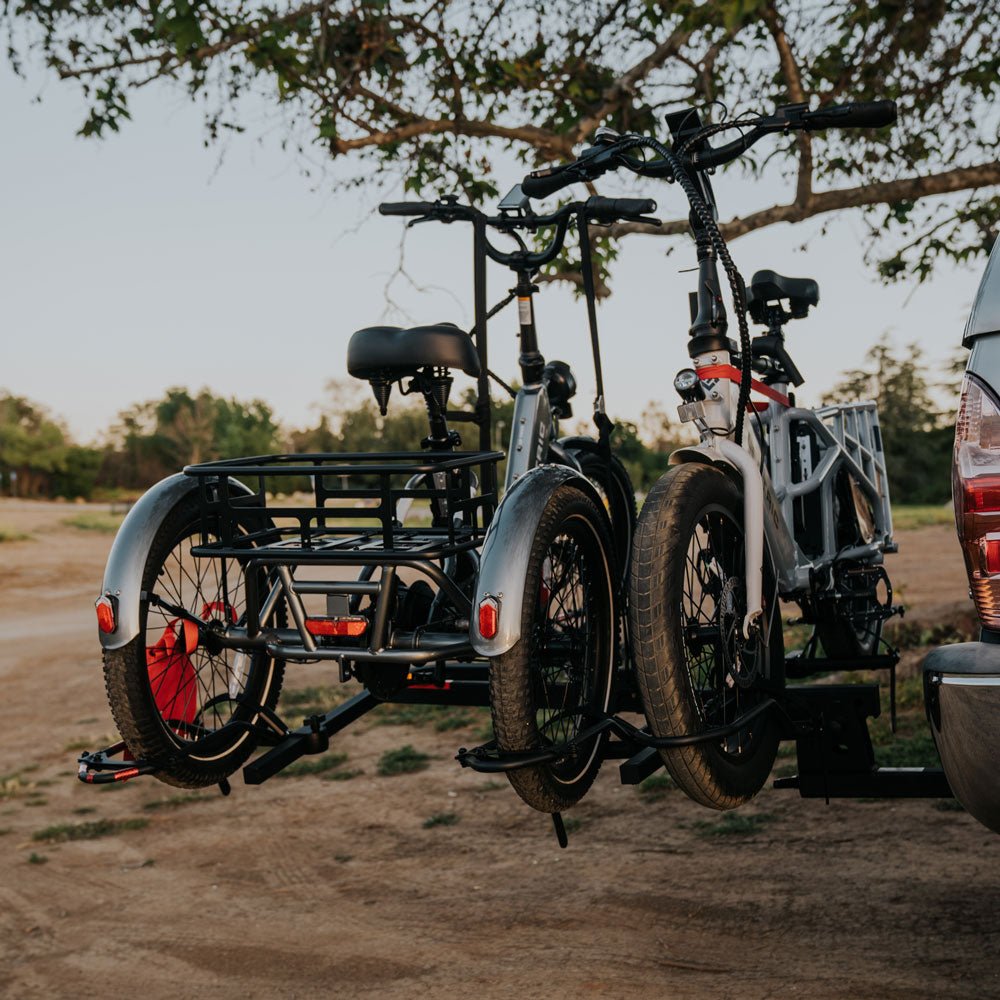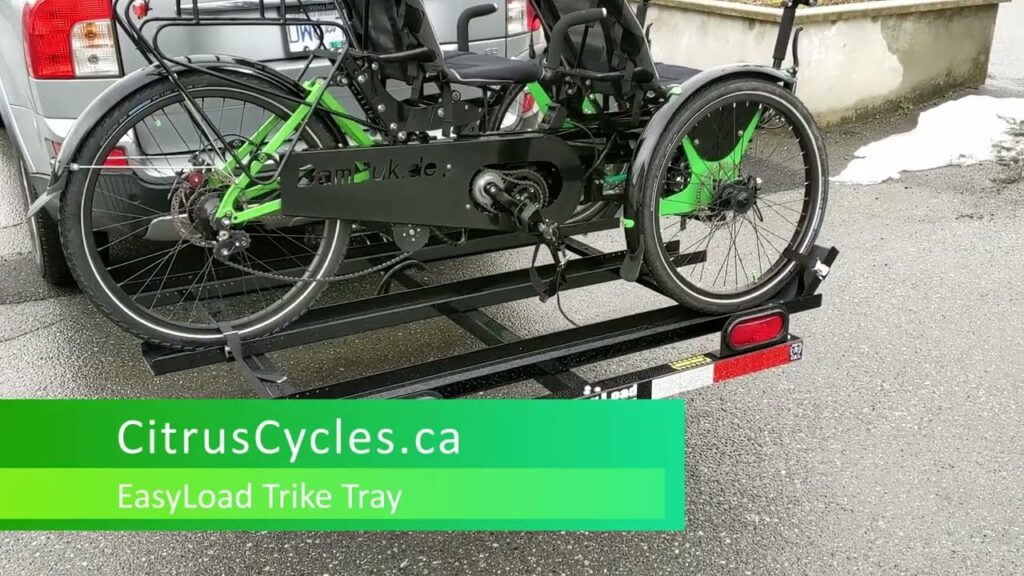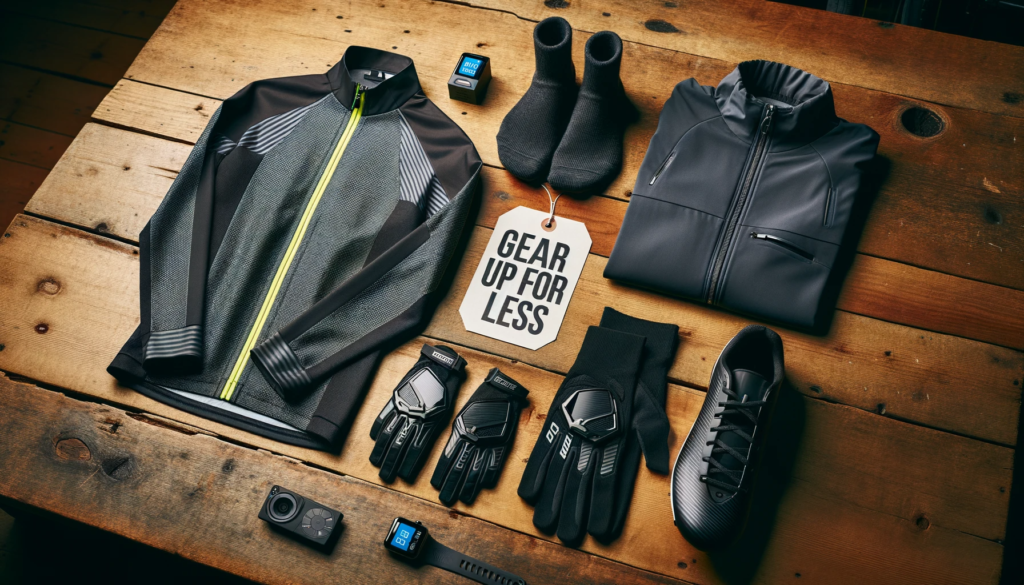Electric trikes are a game-changer for commuting, leisure rides, and even small deliveries. They’re fun, practical, and easy to ride.
But when it comes time to move them from one place to another, like going on a road trip, relocating, or taking it for repairs, things can get tricky.
Transporting an electric trike isn’t the same as moving a regular bike. It’s heavier, bulkier, and more delicate because of the electrical components. But don’t worry.
In this guide, you’ll learn how to safely transport an electric trike and with confidence. Let’s break it down step-by-step.
Why Proper Transportation Matters
Before we get into the how-to, let’s talk about “why”.
Electric trikes aren’t cheap. They often cost thousands of dollars. The last thing you want is a broken fender, damaged motor, or battery issues because of poor handling.
Plus, improper handling can harm the battery, motor, or frame, leading to costly repairs. And unlike traditional bicycles, electric trikes often can’t be tossed in the back of a car or strapped to a standard bike rack. They need more planning—and the right tools.
Protecting Your Investment
An electric trike is a significant purchase. Mishandling it during transport can lead to scratches, dents, or even broken parts. The battery, in particular, is sensitive. Dropping it or exposing it to extreme conditions can reduce its lifespan or make it unsafe to use.
Ensuring Safety on the Road
A loose trike can become a hazard. If it shifts while you’re driving, it could damage your vehicle or cause you to lose control. Properly securing your trike ensures it stays in place, keeping you, your passengers, and other drivers safe.
Step 1: Plan Your Transport Method
The first thing to decide is how you’ll transport your trike. There are several options, and each has its pros and cons. Your choice depends on your trike’s size, your vehicle, and how far you’re going. Let’s break down the most common methods.
1.1 Using a Vehicle Rack
A vehicle rack is a popular choice. There are two main types: hitch-mounted racks and roof racks. Hitch-mounted racks attach to the back of your car or truck. They’re easier to load and can handle heavier trikes.
Roof racks, on the other hand, sit on top of your vehicle. They’re trickier to use because you have to lift the trike up high, which can be tough since electric trikes often weigh 50-100 pounds.
Tip: Check your rack’s weight capacity. Most electric trikes are heavier than standard bikes, so you’ll need a rack designed for e-bikes or trikes. Look for one with a weight limit of at least 100 pounds to be safe.
1.2 Towing with a Trailer
If you’re moving multiple trikes or going a long distance, a trailer might be your best bet. Trailers offer plenty of space and keep your trike protected from the elements. You can use an open trailer or an enclosed one for extra security. Make sure the trailer has a ramp for easy loading and tie-down points to secure the trike.
Things to keep in mind:
- Practice driving with a trailer if you’re not used to it
- Use wheel chocks to keep the trike in place
- Always double-check hitch connections before driving
1.3 Transporting Inside a Vehicle
Some trikes can fit inside a van, SUV, or truck bed. This method protects your trike from weather and theft. However, it requires enough interior space. Folding trikes are easier to fit, but many electric trikes are bulky. Measure your trike and vehicle to ensure a good fit before trying this.
Pro Tip:
- If you’re using a truck bed, pad the surface with blankets or foam to prevent scratches.
- Use a ramp to load and unload safely
- Secure the trike with bungee cords or ratchet straps.
Step 2: Preparing The Electric Trike For Transport
Once you’ve chosen your transport method, it’s time to prep your trike. Proper preparation prevents damage and makes loading easier. Here’s how to get your trike ready.
2.1 Turn Off the Power
Before anything else, power off the trike completely. Disconnect the battery if your model allows it. This prevents accidental activation during transport.
Why it’s important:
- Protects electrical systems from damage
- Reduces fire risk
- Prevents unnecessary battery drain
2.2 Remove the Battery
The battery is one of the most delicate parts of an electric trike. If possible, remove it before transport. This reduces weight and protects the battery from vibrations or impacts. Store it in a padded case and keep it in a cool, dry place, like the passenger area of your vehicle. Avoid extreme heat or cold, as these can damage the battery.
2.3 Checking Tire Pressure And Brakes
Before embarking on your journey, it’s important to assess the tire pressure and braking system of your electric trike. This ensures a safe and smooth ride during transport. Here’s how you can do it:
- Inspect the tires for any signs of wear and tear, such as cuts or punctures. Replace any damaged tires before transporting the trike.
- Check the tire pressure using a pressure gauge. Ensure it aligns with the manufacturer’s recommended PSI (pounds per square inch) levels.
- Examine the braking system and make sure it’s in optimal condition. Verify that the brakes engage and release properly, providing effective stopping power when needed.
- If necessary, adjust the tire pressure and brakes accordingly to ensure they meet the required standards for safe transport.
2.4 Protecting Fragile Components
Electric trikes often contain fragile components that need extra protection during transportation. By adopting the following precautions, you can safeguard these parts and prevent potential damage:
- Remove any loose or detachable accessories, such as mirrors or baskets, to prevent them from getting damaged or falling off during transport.
- Wrap fragile components, such as the display console or lights, in soft materials like foam or cloth to shield them from scratches or impact.
- Consider utilizing a padded cover or blanket to shield the entire trike, providing an additional layer of protection against potential jolts or abrasions.
2.5 Fold or Adjust if Possible
Some electric trikes are foldable, which makes them easier to transport. If your trike has this feature, fold it according to the manufacturer’s instructions. If it doesn’t fold, adjust the handlebars or seat to make it more compact. This can save space and reduce the risk of damage.

Credit: hollywoodracks.com
Step 3: Securing The Electric Trike For Transit
No matter how you’re transporting the trike, securing it properly is key. A wobbly trike can get damaged—or worse, become a road hazard.
3.1 Using Quality Tie-down Straps
Invest in strong tie-down straps or ratchet straps. These are better than ropes because they’re adjustable and hold the trike firmly. Attach the straps to the trike’s frame, not delicate parts like the handlebars or pedals. Use at least four straps for stability—one for each wheel and additional ones for the frame.
Tip:
- Avoid overtightening the straps. Too much pressure can bend the frame or damage components.
- Cross the straps in an X-pattern to limit side-to-side movement.
- Check the straps for any signs of wear or damage before each use, ensuring they are in good condition.
3.2 Placing The Trike Correctly In The Transport Vehicle
Proper placement of the electric trike inside the transport vehicle plays a significant role in its security. Make sure to position the trike in a way that provides stability and minimizes the risk of tipping over or shifting during transit.
Here’s a step-by-step guide:
- Start by clearing out any loose items or debris from the transport vehicle to create a clean and secure space.
- Position the electric trike in the center of the vehicle, distributing the weight evenly to maintain balance.
- Use securing mechanisms, such as wheel chocks or straps, to prevent the trike from rolling or sliding.
- Ensure that the trike is securely fastened and cannot move or shift during transit.
3.3 Additional Security Measures
In addition to using tie-down straps and placing the trike correctly, several extra security measures can be taken to further safeguard the electric trike during transit.
Consider the following:
- Pad the vulnerable areas: Protect sensitive components of the trike by adding extra padding or cushioning to absorb any impact during transport.
- Use lockable devices: Utilize lockable mechanisms, such as cable locks or wheel locks, to deter theft and provide an additional layer of security.
- Monitor air pressure: Check the tire pressure before transporting the electric trike and ensure that they are inflated to the recommended level for a safe journey.
3.4 Cover the Trike
If you’re transporting the trike on an open trailer or hitch rack, cover it with a waterproof tarp. This protects it from rain, dust, and debris flying off the road.
By implementing these additional security measures, you can enhance the protection of your electric trike and enjoy a worry-free transit experience.

Credit: www.youtube.com
Step 4: Safety Measures During Transport
How you drive plays a big role in keeping your trike safe. Electric trikes are heavy, and their weight can affect your vehicle’s handling. Here’s how to stay safe on the road.
4.1 Monitoring The Trike During Transit
Regularly monitoring the electric trike while it is being transported is essential to identify any potential issues and prevent them from escalating. Here are some important tips for monitoring your trike during transit:
- Ensure the trike is securely fastened or strapped to the vehicle to prevent it from moving or falling during transportation.
- Regularly check the trike’s stability and make necessary adjustments if needed, particularly when encountering uneven roads or stops.
- Inspect all connections, such as the handlebars, brakes, and wheels, to ensure they remain intact and undamaged throughout the journey.
- If you notice any unusual sounds, vibrations, or movements coming from the trike, it is crucial to pull over and assess the situation. Address any issues promptly to avoid potential accidents.
4.2 Adhering To Speed Limits And Driving Cautiously
When transporting an electric trike, it is essential to adhere to speed limits and drive cautiously to ensure the safety of both the trike and other motorists on the road. Consider the following tips for responsible and safe driving:
- Always obey traffic rules and regulations to minimize the risk of accidents or collisions.
- Maintain a steady and moderate speed that is appropriate for the type of vehicle you are driving and the prevailing road conditions.
- Give yourself plenty of time to brake and accelerate smoothly, especially when carrying a loaded trailer with a trike.
- Stay focused and avoid distractions while driving to maintain full control over the vehicle and react promptly to any unexpected situations.
Step 5: Unload and Inspect
Once you reach your destination, don’t just rush to unload. Take your time to do it safely and check for any issues.
5.1 Unload Carefully
Reverse the loading process. Remove straps slowly and support the trike as you take it off the rack or trailer. If you’re lifting it, ask for help—electric trikes are heavy! Avoid dropping it or letting it roll uncontrolled.
5.2 Inspect for Damage
Check your trike thoroughly after unloading. Look for scratches, dents, or loose parts. Test the battery, motor, and brakes to ensure everything works. If you notice damage, contact the manufacturer or a repair shop right away.
5.3 Clean and Store
Transport can leave your trike dirty. Wipe it down with a soft cloth to remove dust or road grime. If you’re not using it right away, store it in a dry, secure place. Reattach the battery and any removed parts, and charge it if needed.
Step 6: Legal Considerations For Transporting Electric Trikes
Transporting electric trikes comes with specific legal considerations that riders must be aware of to avoid any issues. Understanding local transport regulations and ensuring proper documentation are crucial steps in ensuring a smooth and hassle-free transport experience.
6.1 Understanding Local Transport Regulations
- Check local laws for guidelines on electric trike transportation.
- Be aware of any restrictions on where and how electric trikes can be transported.
- Follow speed limits and safety regulations when transporting your electric trike.
6.2 Ensuring Proper Documentation
- Keep your trike’s registration and insurance documents up to date.
- Carry a copy of your driver’s license and any other necessary permits.
- Ensure your electric trike is properly labeled with required identification markers.
Step 7: Special Considerations For Long-distance Transportation
When transporting an electric trike over long distances, there are several special considerations to keep in mind to ensure a smooth and safe journey. Planning proper breaks for trike inspection, considering weather and climate precautions are crucial for a hassle-free transportation experience.
7.1 Planning Breaks For Trike Inspection
- Stop every 100 miles to inspect tire pressure and suspension system.
- Check the battery level and charging needs during each break.
- Ensure secure fastening of the trike on the transport vehicle.
7.2 Weather And Climate Precautions
- Monitor weather forecasts to plan route accordingly.
- Protect the trike from excessive sun, rain, or harsh weather conditions.
- Secure the trike with weather-resistant covers during transportation.
Additional Tips and Tricks
Here are a few extra pointers to make transporting your electric trike even smoother.
- Invest in a Trike Cover: A good cover protects your trike from dust, rain, and UV rays. Look for one that’s waterproof and fits your trike’s size. Some covers even have lockable features for added security.
- Know Your Trike’s Weight: Always check your trike’s weight and dimensions before buying a rack or trailer. This ensures you get equipment that can handle the load. Most manufacturers list this info in the manual or on their website.
- Practice Loading at Home: If you’re new to transporting a trike, practice at home first. Load and unload it a few times to get the hang of it. This builds confidence and helps you spot any issues with your setup.
- Label the battery: If you remove the battery for transport, label it clearly and keep it in a padded bag. Batteries can be sensitive to impact.
- Take photos: Before and after transport, take photos of the trike. If anything gets damaged, you’ll have proof for insurance or repairs.
- Check local laws: Some areas have rules about transporting large e-bikes or trailers. A quick check online can save you from a fine.
- Consider Professional Help: For long moves or if you’re unsure about transporting your trike, hire professionals. Some moving companies specialize in transporting e-bikes and trikes. They have the right equipment and know-how to do it safely.
Frequently Asked Questions
How Do You Transport An Adult Trike?
To transport an adult trike, use a car rack or a hitch-mounted carrier. Secure the trike firmly and use additional straps for stability during transport. Always ensure that the trike is within the weight limits of the carrier.
What Is The Easiest Way To Transport An Ebike?
The easiest way to transport an eBike is by using a bike rack on your car. Just secure the eBike onto the rack and drive to your destination.
Can You Transport An Ebike With Battery In?
Yes, you can transport an eBike with the battery in place. It’s safe and allowed.
How To Transport A Recumbent Trike?
To transport a recumbent trike, follow these steps:
- Remove any detachable parts, like pedals or handlebars, to make it more compact.
- Secure the trike in a sturdy rack or carrier, using straps or bungee cords.
- Use a vehicle with a large enough trunk space or a trailer, if necessary.
- Ensure the trike is properly balanced and secure during transportation.
- Drive carefully to avoid any accidents or damage to the recumbent trike.
Conclusion
Transporting an electric trike can be a manageable task with the right preparation and knowledge. By following the tips provided in this guide, you can ensure a smooth and safe transport process for your electric trike. With proper planning and the right equipment, you can enjoy the convenience and freedom of taking your electric trike wherever you go.




